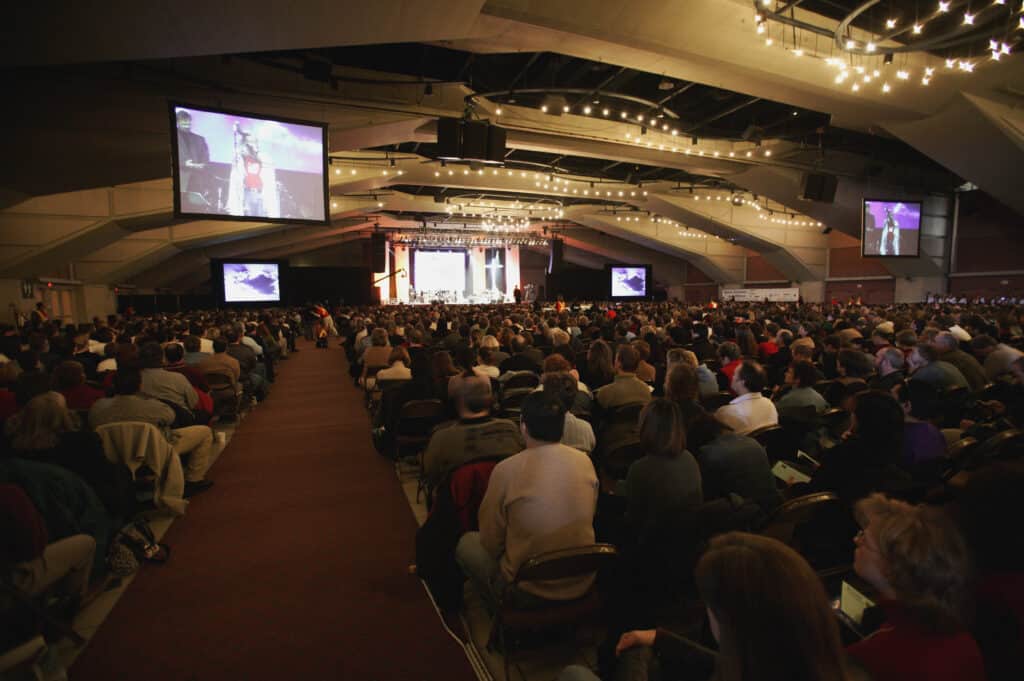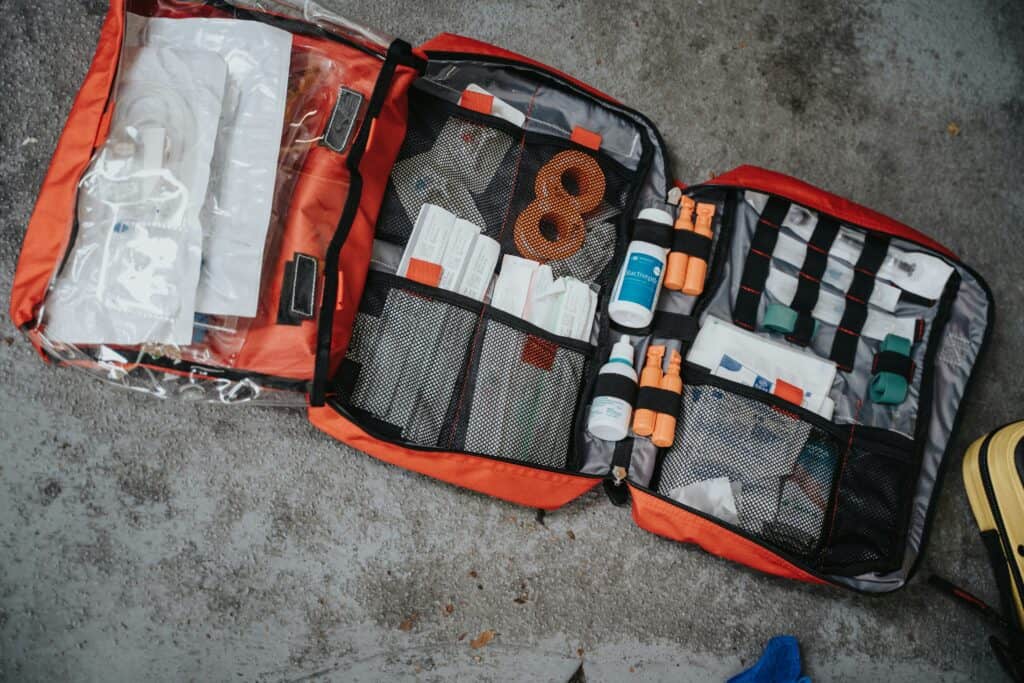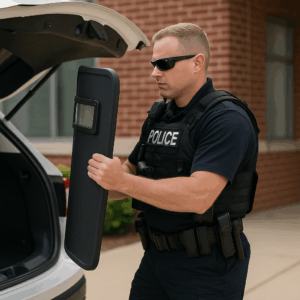Safety and security in places of worship, such as churches, play a crucial role in ensuring the well-being of congregants and maintaining a peaceful environment.
However, many churches may not have the resources to hire professional security teams.
Volunteer safety and security teams can be an effective and practical solution to address this need.
Creating a volunteer security team for a church involves identifying the right individuals, providing them with appropriate training, and fostering a culture of teamwork and commitment to the cause.
By forming a dedicated group of volunteers, churches can enhance the overall safety of their premises and improve preparedness for unforeseen incidents or emergencies.
Identifying and Recruiting Volunteers
Characteristics of Successful Church Safety Volunteers
When creating a volunteer safety and security team at a church, it is important to identify congregants who possess specific characteristics that make them suitable for this role.
Successful church safety volunteers should have a strong sense of responsibility, good communication skills, and the ability to remain calm under pressure.
They should be able to work well in a team and adapt to changing situations.
Additionally, it is beneficial if potential volunteers have prior experience or training in safety and security measures.
Recruiting from Different Backgrounds
In order to recruit a diverse and well-rounded team, consider casting a wide net and seeking volunteers from various backgrounds.
Encourage church members to participate, as their familiarity with the church and its congregation can be invaluable in maintaining a safe environment.
One way of achieving this is by recruiting people with law enforcement backgrounds.
These individuals will likely have experience with emergency situations and can provide valuable insight into developing effective safety and security protocols.
Another group to consider recruiting from are emergency medical technicians.
They possess crucial skills in providing first aid and handling medical emergencies that may arise during church events.
By actively identifying and recruiting volunteers with diverse backgrounds and skill sets, a church can develop a strong and capable safety and security team to ensure its congregants feel protected and at ease during worship services and events.
Establishing a Safety and Security Team Structure
Leadership and Team Coordination
The successful formation of a volunteer safety and security team at a church begins with strong leadership and effective team coordination.
It is important to have clearly defined roles for leaders, such as co-chairpersons, one from management, and one from the hourly employees, to provide effective guidance and direction to the team members National Safety Council.
The leadership should work collaboratively with church staff to identify potential volunteers who possess the desired attributes and skills for the safety and security team.
It’s crucial to provide appropriate training and resources to ensure that all team members are adequately prepared for their roles, including security measures and emergency response procedures.
Roles and Responsibilities
The safety and security team should comprise individuals from various backgrounds and expertise to provide a comprehensive approach to church security.
Key roles can include representatives from operations, maintenance, purchasing, security, medical, and human resources sectors.
Some specific roles and responsibilities within the team might include:
- Patrol and surveillance: Team members assigned to this role would monitor the church premises, both inside and outside, looking out for suspicious activity or potential safety hazards.
- Emergency response: These team members would be trained to handle various emergency situations that could arise during church functions, such as violent incidents, medical emergencies, or natural disasters.
- Communication and coordination: Responsible for maintaining communication systems, such as two-way radios, and coordinating the efforts of the security team during an event or emergency.
- Training and development: Ensures that all team members receive ongoing training in safety procedures, security protocols, and relevant legal guidelines.
Establishing an effective safety and security team structure requires clear leadership, defined roles, and responsibilities for the church community.
By assembling a team with diverse skills and expertise, churches can be better prepared to manage and respond to any safety and security challenges that may arise.
Training and Building the Skills of Volunteers
Professional Training and Partnership with Law Enforcement
In building a church security team, it is essential to provide members with professional training.
This not only ensures they have the necessary skills to handle potential crises but also fosters a feeling of confidence and unity within the group.
Partnering with local law enforcement can grant access to wide-ranging training programs, sharing knowledge and best practices specific to security in a religious setting.
Collaborating with law enforcement facilitates opportunities for training volunteers in various aspects, including situational awareness, crisis response, and conflict resolution.
Furthermore, maintaining a strong liaison with law enforcement agencies keeps your security team updated on new security threats and challenges specific to your area.
Church-Specific Security Training
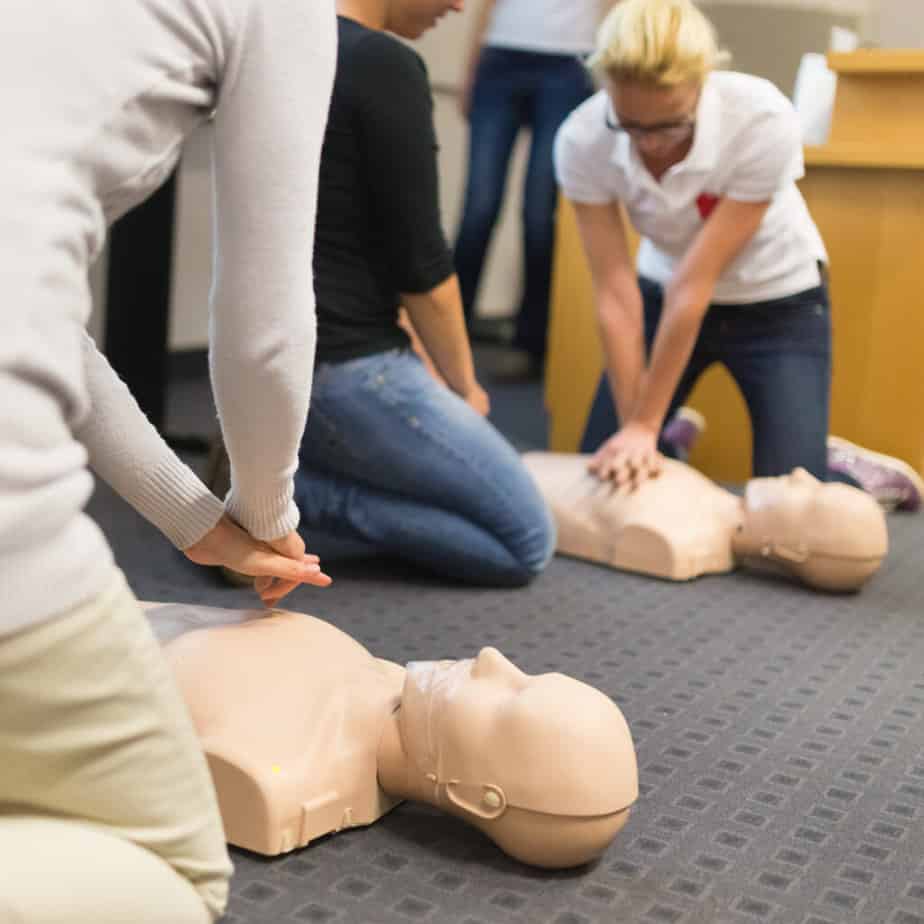
Apart from professional training, volunteers should also undergo church-specific security training tailored to the unique needs of the congregation and religious environment.
This training should focus on identifying potential risks and vulnerabilities, creating emergency response plans, and coordinating team members effectively.
Some key elements of church-specific security training include:
- Familiarization with the layout and design of the church premises, including entry and exit points, operational areas, and areas requiring extra surveillance.
- Development of communication protocols and processes for reporting potential threats or incidents.
- Regular drills to practice responding to various emergency scenarios, such as a medical emergency, fire, or security breach.
- Instruction on the lawful use of force, if applicable, and understanding the church’s policy regarding weapons and their use.
- Emphasis on the importance of staying vigilant, providing pastoral care, and maintaining a supportive environment for church members.
In conclusion, a volunteer safety and security team for your church can greatly benefit from both professional and church-specific security training, ensuring that they are well-equipped to protect your congregation and respond effectively to any potential threats.
Remember that the safety and well-being of your church community should always be the top priority.
Regular training, partnerships with law enforcement, and a focus on understanding the unique needs of your church will greatly contribute to the success of your volunteer security team.
Developing Policies and Procedures
When building a Volunteer Safety and Security Team at a church, it is crucial to establish comprehensive policies and procedures that will guide the team’s actions.
Let’s discuss the importance of policy and procedural guidelines, as well as considerations for the use of force and weapons on church premises.
Policy and Procedural Guidelines
To ensure a well-functioning security team, it is essential that churches create clear and concise policy and procedural guidelines.
These should address the roles and responsibilities of team members, communication channels, emergencies, and incident reporting.
Outlining these guidelines helps to set expectations, maintain consistency, and enhance the overall safety of the congregation.
Some key aspects to consider when developing policy and procedural guidelines are:
- Identifying the scope and objectives of the security team
- Defining team member roles and areas of responsibility
- Establishing a clear chain of command
- Detailing communication protocols, both internally and with local law enforcement
- Outlining procedures for dealing with various types of incidents, such as medical emergencies, disruptive individuals, and natural disasters
Use of Force and Weapons
It is important to include guidelines on the use of force and weapons within church security policies.
These should cover the conditions under which force may be used to protect the congregation, as well as any restrictions or limitations on weapons usage.
Since many churches take a strong stance on nonviolence, it is vital to strike a balance between promoting safety and adhering to the church’s values.
Considerations for the use of force and weapons may include:
- Requiring team members to undergo regular training on the appropriate use of force and de-escalation techniques
- Establishing a requirement for team members to obtain concealed carry permits, if firearms are to be used
- Detailing any restrictions on the type of weapons allowed on church property (e.g., prohibiting tasers or pepper spray)
- Implementing measures to ensure that weapons are stored safely and securely, when not in use
By addressing these aspects and following the guidance from the Church Safety and Security Guidelines, churches can develop a comprehensive and effective volunteer safety and security team to protect their congregations.
Screening and Vetting Volunteers
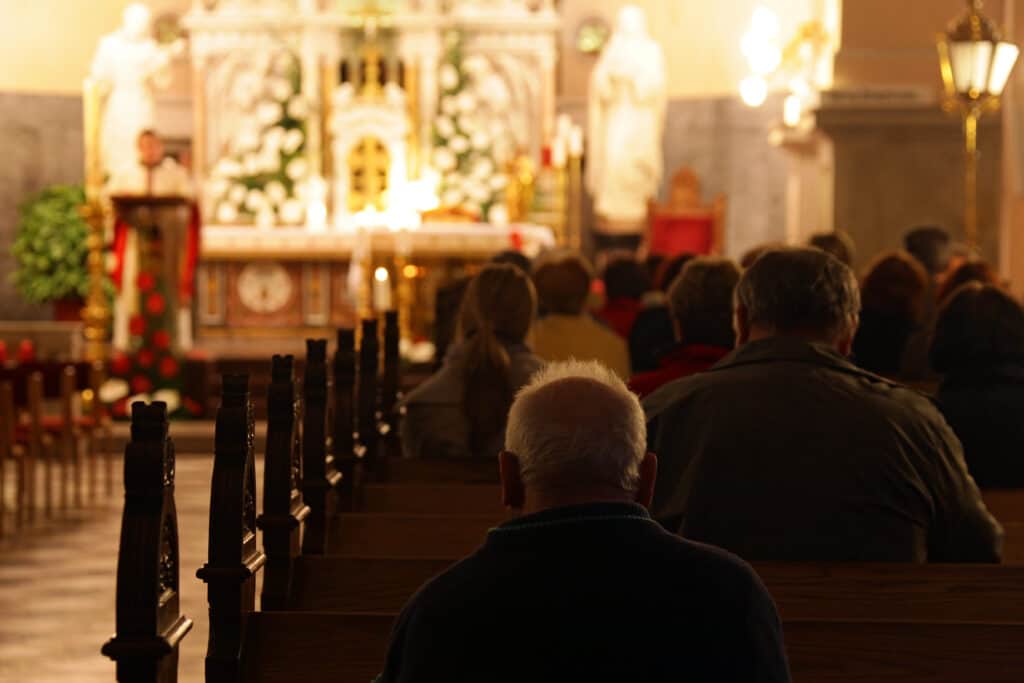
When building a Volunteer Safety and Security Team at a church, proper screening and vetting of volunteers is crucial to ensure the safety and security of all members.
Let’s discuss the importance of Criminal Background Checks, Liability and Insurance Considerations when selecting volunteers for your safety team.
Criminal Background Checks
It is essential to conduct criminal background checks on all potential volunteers for your security team.
This process helps to identify any past criminal activities that may hinder their ability to serve safely and responsibly in a security role.
A thorough background screening process will ensure that volunteers have no history of violence, theft, or other criminal behaviors that could compromise the safety of the congregants.
Regularly updating and reviewing background checks for your volunteers is also necessary to stay informed on any changes in their backgrounds.
Liability and Insurance Considerations
When establishing a volunteer safety and security team at your church, it is important to consider liability and insurance issues as well.
Churches should have liability coverage that specifically addresses the actions of security team members.
This coverage can protect the church in case of any legal disputes or unexpected incidents that might arise involving the security team.
It may also be necessary to review and update the church’s existing insurance policy to include volunteer security team members as insured parties.
Furthermore, it is essential to emphasize the proper training of volunteers in safety and security protocols to minimize potential risks and incidents.
Ensuring that volunteers are knowledgeable about the church’s safety policies, procedures, and expectations can help prevent accidents and mitigate the church’s liability exposure.
By implementing these measures, churches can build a reliable and effective volunteer safety and security team while mitigating potential risks and liabilities.
Maintaining a Success-Oriented Safety and Security Team
Deployment and Serving Schedule Management
A key aspect of maintaining a success-oriented volunteer safety and security team is proper deployment and serving schedule management.
Developing a consistent serving schedule allows team members to stay committed and engaged in their roles.
To avoid burnout and to ensure the safety ministry is sustainable, it is necessary to provide time off for the volunteers and allocate responsibilities based on their availability.
Frequent communication regarding schedule changes and updates will help keep everyone informed and support a smoothly-operated volunteer team.
Additionally, it is beneficial to implement a protocol for emergency situations, ensuring that team members know their roles and responsibilities in various scenarios.
Collaborating with Other Safety Ministries
Cooperation with other safety ministries and organizations facilitates a well-rounded approach to church security.
Establishing relationships and communication channels with law enforcement agencies, private security companies, and fellow churches that have safety teams is essential.
One way to foster collaboration is by inviting law enforcement officers, with relevant expertise, to provide training and guidance to the volunteer team.
Inquire about any criminal history background checks or additional liability protection needed for your team members, and seek advice from organizations or other experts to minimize potential risks.
Remember to acknowledge everyone’s unique talents and skills, and provide opportunities for growth and development.
Encourage your team to pray together, fostering a sense of unity and shared mission while strengthening their spiritual foundation.
Implementing these strategies will help maintain a success-oriented volunteer safety and security team at your church.
By effectively managing the deployment and serving schedule, and collaborating with other safety ministries, you can create an environment that promotes safety, security, and a strong sense of community.
Implementing Best Practices for Church Safety and Security
Responding to Emergency Situations
When building a Volunteer Safety and Security Team at church, it is vital to establish guidelines on how to respond to emergency situations effectively.
A well-prepared church safety team should have access to essential equipment, such as an AED (Automated External Defibrillator), and be competent in using it.
In addition, personnel should be trained in the following areas:
- Identifying potential threats and risks
- Evacuation procedures during emergencies
- Addressing cases of panic and disorder within the congregation
- Providing first aid and basic medical assistance
Another critical aspect is to create a communication plan for emergencies, ensuring that all church safety team members are informed and know how to respond accordingly.
Promoting a Culture of Safety within the Congregation
Aside from establishing best practices in emergency situations, promoting a culture of safety within the congregation is equally important.
Church leadership should involve the whole congregation in fostering a safe environment through:
- Education: Organize workshops and training sessions to inform the congregation about potential risks and emergency procedures.
- Prayer: Encourage regular prayer sessions for the safety and security of the church and its members.
- Volunteer participation: Create opportunities for congregation members to volunteer in safety and security roles, such as joining the church safety team.
Furthermore, a competent church safety team should continuously update their skills and knowledge by attending relevant courses and staying informed on best practices related to safety and security.
This will ensure that the team is prepared, no matter the situation, and can effectively protect the church and its congregation.
Frequently Asked Questions
Organizing a church safety team
Organizing a church safety team starts with the identification of potential volunteers.
Look for individuals who are committed to safety and have a desire to serve the church community.
Recruit these volunteers and provide them with the necessary training to effectively carry out their responsibilities.
Establish a clear structure for the team, including leadership roles and procedures for communication.
Roles and responsibilities of security members
The roles and responsibilities of security members include, but are not limited to, the monitoring of church grounds, providing assistance in emergency situations, and ensuring the safety of congregants during events.
Team members may also be responsible for the enforcement of safety policies and procedures as well as providing security during special events or services.
Creating a security plan for the church
A comprehensive security plan for the church should include the identification of potential risks, an assessment of existing security measures, and a strategy for addressing gaps in coverage.
This plan should involve the input of security team members, church leadership, and law enforcement professionals when applicable.
Review and update the plan regularly to ensure that it remains effective in the face of evolving threats.
Safety guidelines for small churches
Small churches can benefit from implementing basic safety guidelines, such as securing doors and windows, developing an emergency evacuation plan, and familiarizing congregants with safety procedures.
It is also important to cultivate a culture of vigilance, encouraging community members to report any suspicious activities or individuals they may encounter on church grounds.
Security team training tips
Training should be a priority for any church security team.
Provide team members with regular training opportunities, focusing on topics such as conflict resolution, first aid, crisis management, and emergency response procedures.
Additionally, consider partnering with local law enforcement agencies to offer specialized training in areas such as active shooter response.
Biblical references for safety
The concept of safety can be found in various passages throughout the Bible.
For example, Proverbs 22:3 states, “A prudent person foresees danger and takes precautions. The simpleton goes blindly on and suffers the consequences.”
Also, Psalm 121:1-2 states the importance of trusting in God for protection, “I lift up my eyes to the hills. From where does my help come? My help comes from the Lord, who made heaven and earth.”
Incorporate biblical principles into the basis of your church safety and security plan while emphasizing the importance of practical precautions.
Conclusion
In summary, building a volunteer safety and security team at church involves several essential steps.
First, it is vital to identify the right individuals with the desired attributes and skills.
These may include background checks, experience in security or law enforcement, and a strong commitment to the church’s mission.
Next, creating a comprehensive training program is crucial for ensuring team members are well-equipped to handle various situations.
This training should cover emergency procedures, conflict resolution, and other relevant topics.
Additionally, it is beneficial to establish clear communication channels among team members and church leaders, enabling quick responses during emergencies.
Regularly reviewing and updating safety protocols will help the team stay current with potential threats and best practices.
Collaborating with local authorities, such as the police and fire departments and other experts, can also provide valuable insights and resources.
Lastly, recognizing and celebrating volunteers’ hard work and dedication is essential for maintaining motivation and fostering a sense of community.
By following these steps, churches can successfully build a volunteer safety and security team that upholds a safe environment for all members and guests.

